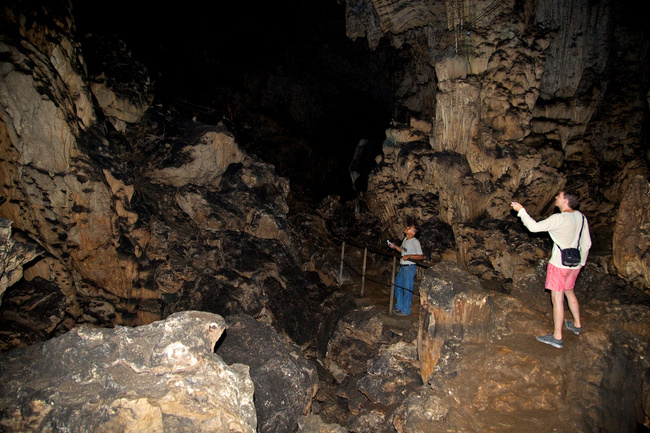
Candelaria Caves
The fantastic limestone caves of Candelaria are composed of seven separate caves that are interconnected by the Río Candelaria. The caves are spread across 14 miles (22 km) and have ceilings that reach as high as 200 feet (60 m). Candelaria is one of Central America’s largest cave systems.
More about Candelaria Caves
Set within the limestone mountains in northern Alta Verapaz, the Candelaria caves were long sacred for Q’eqchi Mayans. The caves were thought of as passages into the underworld and were likely used as a place of worship. The caves of Candelaria were lost with the disappearance of the Maya, but were rediscovered by Frenchman Daniel Dreux in 1974.
The caves, which were recently awarded national park status, were formed by the persistent flow of the Río Candelaria. The caves are 60–100 feet (20–30 m) wide, 30–200 feet (10–60 m) tall, and occasionally punctuated by skylights. It’s possible to explore them by foot or in an inflatable raft.
There are three main gateways for exploring the caves. The most convenient option is at the Complejo Cultural y Ecoturístico Cuevas de Candelaria, which is near San Antonio Las Cuevas. Created by Daniel Dreux, this organization aims to protect the surrounding forests and also aid in the sustainable development of the local community.
While here, you can tour the Cueva del Mico, which features large and impressive chambers. One in particular, the “Tzul Tacca,” is especially exceptional. This 650-foot (200-m) long chamber, with its shafts of sunlight and incredible rock formations, is gorgeous.
South of this is the community tourism project of Candelaria Muq’b’il Ha’. A 30-minute walk along a trail leads to the Venado Seco cave. You can ride inner tubes on the Río Candelaria that runs through these caves. There is one other option at Candelaria Camposanto. There are two dry caves here – “Cúpula de los Murciélagos” and “Ventana de Seguridad” – that can be explored, as well as one wet section that can be ridden on inner tubes.
It's more than just having a good time or visiting beautiful places (although that's absolutely a part of it!), it's about being part of a unique experience that stays with you.



